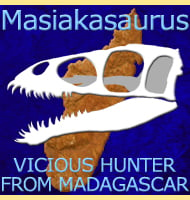Nemegtosaurus
In Depth Although known from only a single partial skull, Nemegtosaurus is quite a find as titanosaurid dinosaurs are often only known from post cranial remains. However another titanosaurid called Opisthocoelicaudia is also known from the same Formation as Nemegtosaurus, and this one is only known from post cranial remains. This has led some to … Read more
